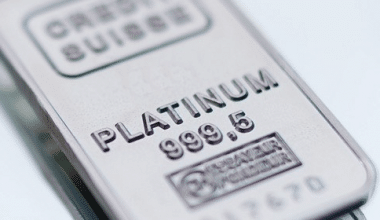Yield, that is, return and risk have a direct relationship. The lower the risk, the lower the return. To get higher returns, you have to invest in market-linked investments, not just fixed-income investments. High yield investments are investments that produce a high return in the form of a dividend to the investor.
Before investing in this, it is important you know that higher yield always comes with higher risks. Understand your risk tolerance to keep from losing your principal.
The post has some high yield investments you can invest in and specific information you need to know before you invest in them.
To this effect, it is going to be classified into two; Low-risk Investments with high yield and high yield investments with high risk.
High Yield Investments with High-Risk
Some of them are listed below. Investopedia agrees with these choices;
High Yield Bonds
They are often called junk bonds. They have the characteristics of taking higher risks for higher returns or yield.
The companies issuing them pay a higher yield in order to attract investors.
You can buy individual high yield bonds, but most investors would find high yield bond mutual funds or exchange-traded funds (ETFs) to be a more attractive and diversified option.
What you should know about High yields Bond investments
The following points should be considered according to USNews.
It requires serious research.
You need to find out all the information there is before investing in them.
Investors who are interested in buying individual corporate bonds need to review the company critically. Check if they have a positive cash flow, then profitability. Compare it with industry performance.
High yield bonds funds require diversification
High yield bond funds have different assets from different issuers. This is especially true as ETFs have different assets in their portfolio, because of that, a decline in the yield of one stock cannot affect the overall yield of all portfolio.
This was explained in detail in our post on Understanding Dividend stocks and how to Invest. You should read it.
Learn about mutual fund and ETF differences
Mutual funds are actively managed. The investor can take advantage of mispricing. For mutual funds, to get your money, the fund manager needs to sell the securities. This can be difficult if market conditions are bad.
ETFs offer a passive income type. Unlike the mutual funds that show investors their worth quarterly, ETFs offer more transparency and are easier to sell in volatile times.
Mortgage Real Estate
Mortgage real estate investment trusts (REITs) make money by lending to property companies, purchasing mortgages, and mortgage-backed securities. Like all REITs, they’re obligated by law just like utility companies to pay out 90 percent of their profits in the form of dividends to investors in return for favorable tax treatment.
Currency Trading
Currency, or forex trading, as it is called, is not for beginners. You need to understand the market perfectly before starting out. Taking a forex training class is very necessary because it is a high yield investment.
Venture Capital
The future of startups seeking investment from venture capitalists is particularly unstable and uncertain. Many startups fail, but a few are able to offer high-demand products and services that the public wants and needs.
Because of the uncertainty of the investment, it is of very high risk. If it succeeds, the yield is also quite high.
Investing in Options
Options offer high rewards for investors trying to time the market.
An investor who purchases options may purchase a stock or commodity equity at a specified price within a future date range. If the price of a security turns out not to be as the investor originally predicted, the investor does not have to purchase or sell the option security.
This form of investment is especially risky because it places time requirements on the purchase or sale of securities. Professional investors often discourage the practice of timing the market and this is why options can be dangerous or rewarding.
Low-Risk High Yield Investments
We are just going to list a few of them:
- Dividend Stock: We already have a post dedicated to this. Read it here.
- Corporate Bonds: Corporations can issue bonds to investors to raise money. These short term bonds are less risky and have an average maturity of one to five years, making them less exposed to changes in interest rates. Since some investors want a little more risk for a higher return, they can diversify the bonds. However, you should invest in corporations that are financially solid. If you invest in big public companies like Google, Amazon, or Apple, you’ll minimize the likelihood of losing your money because it’s very unlikely they will go bankrupt in the near future.
- Preferred Stock: Preferred shares provide shareholders with the ability to receive dividends before shareholders of the company’s common stock. Even if the company declares bankruptcy.
- Others include; Certificates of deposits, high yield savings account, money market accounts, treasury securities, etc.
How To spot a high yield investment,
- Check the risk involved. High risk equals high return
- Make your research about company cashflow and profitability
- Check industry performance
Duration of the investment. Short term investments usually have a lower yield.
Top High Yield Investments:
- High yields Savings accounts.
- Certificates of Deposit.
- Government Issued Bond Funds
- Short-term corporate bond funds
- Bond financing for municipalities
- Index funds tracking the S&P 500
- Dividend stock mutual funds
- Index funds for the Nasdaq-100
- Housing for rent
- Cryptocurrency
Overview of the Best High Yield Investments of 2022
#1. High Yields Savings Accounts
A high-yield online savings account gives you interest on the cash balance in your account. And, like a savings account yielding pennies at your local bank, high-yield internet savings accounts are easily accessible vehicles for your money. Online banks generally provide substantially higher interest rates due to lower overhead costs. Furthermore, you may usually get your money by immediately moving it to your primary bank or by using an ATM.
A savings account is a smart option for those who will require cash in the near future.
The most beneficial investment for
A high-yield savings account is ideal for risk-averse investors, particularly those who need money quickly and wish to avoid the risk of losing their money.
Risk
You don’t have to worry about losing your money because the banks that provide these accounts are FDIC-insured. While high-yield savings accounts, like CDs, are generally secure investments, you risk losing purchasing power over time due to inflation if rates are too low.
Liquidity
Savings accounts are about as liquid as it gets for your money. You can add or remove funds at any time, though your bank may legally limit you to no more than six withdrawals per statement period if it so chooses.
#2. Certificates of Deposit
Banks issue certificates of deposit, or CDs, which often pay a greater interest rate than savings accounts.
These federally insured time deposits have maturities ranging from a few weeks to several years. Because they are “time deposits,” you cannot withdraw the money without penalty for a set length of time.
The financial institution pays you interest on a CD at regular periods. When it matures, you will receive your original principal plus any accrued interest. It pays to browse around for the best deals online.
CDs might be an excellent choice for retirees who don’t require quick income and can lock up their money for a short period of time due to their safety and greater payments. However, there are many different types of CDs to meet your needs, so you may still take advantage of the higher CD rates.
The most beneficial investment for
A CD is ideal for risk-averse investors, particularly those who require money at a specific time and are willing to tie up their cash in exchange for a slightly higher yield than they would find in a savings account.
Risk
CDs are regarded as risk-free investments. They do, however, carry reinvestment risk, which is the risk that when interest rates fall, investors will earn less when reinvesting principal and interest in new CDs with lower rates, as we saw in 2020. The converse risk is that interest rates will climb and investors will be unable to profit because their funds have already been trapped into a CD.
Consider laddering CDs — investing money in CDs with varying terms — so that your money isn’t stuck in one instrument for an extended period of time. It’s important to keep in mind that inflation and taxes can significantly reduce the purchasing power of your investment.
Liquidity
CDs are less liquid than savings or money market accounts because you tie up your money until the CD matures, which might take months or years. You can get your money faster, but you’ll usually have to pay a penalty.
#3. Bond funds issued by governments
Government bond funds are mutual funds or exchange-traded funds (ETFs) that invest in debt securities issued by the United States government and its agencies.
T-bills, T-notes, T-bonds, and mortgage-backed securities issued by government-sponsored enterprises such as Fannie Mae and Freddie Mac are among the debt instruments in which the funds invest. These government bond funds are ideal for low-risk investors.
These funds are also suitable for first-time investors and those seeking cash flow.
The most beneficial investment for
Government bond funds may be suitable for risk-averse investors, though some types of funds (such as long-term bond funds) may fluctuate significantly more than short-term funds due to interest rate changes.
Risk
Government debt funds are regarded as among the safest investments because the bonds are backed by the full faith and credit of the United States government.
However, the fund, like other mutual funds, is not backed by the government and is subject to risks such as interest rate fluctuations and inflation. When inflation rises, purchasing power can fall. If interest rates rise, the price of existing bonds falls; if interest rates fall, the price of existing bonds rises. Long-term bonds have a higher interest rate risk.
Liquidity
Bond fund shares are extremely liquid, but their value varies based on the interest rate environment.
#4. Short Maturity Corporate Bond Funds.
Corporations may raise funds by offering bonds to investors, which can then be packaged into bond funds that own bonds issued by hundreds of corporations. Short-term bonds typically have maturities ranging from one to five years, making them less subject to interest rate swings than intermediate- or long-term bonds.
Corporate bond funds can be a good alternative for investors seeking income flow, such as retirees, or those seeking to decrease overall portfolio risk while still earning a return.
The most beneficial investment for
Short-term corporate bond funds may be appealing to risk-averse investors seeking a higher yield than government bond funds.
Risk
Short-term corporate bond funds, like other bond funds, are not FDIC-insured. Investment-grade short-term bond funds frequently outperform government and municipal bond funds in terms of returns.
However, the larger the rewards, the greater the risk. There is always the possibility that a company’s credit rating will be reduced or that it would run into financial difficulties and default on the bonds. To mitigate this risk, ensure that your fund is comprised of high-quality corporate bonds.
Liquidity
Every business day, you can buy or sell fund shares. Furthermore, you can normally reinvest income distributions or make new assets at any time. Simply keep in mind that capital losses are possible.
#5. Municipalities Bond Funds
Municipal bond funds invest in a variety of municipal bonds, also known as munis, issued by state and local governments. Earned interest is generally free of federal income taxes and may also be exempt from state and local taxes, too, making them particularly attractive for investors in high-tax states or high tax brackets.
Muni bonds may be bought individually, through a mutual fund or an exchange-traded fund. You can consult with a financial adviser to find the right investment type for you, but you may want to stick with those in your state or locality for additional tax advantages.
Municipal bond funds are great for beginning investors because they offer diversified exposure without the investor having to analyze individual bonds. They’re also ideal for cash-flow-seeking investors.
The most beneficial investment for
Municipal bonds are a good choice for investors who live in high-tax states since they allow them to avoid levies while also generating income. Because of their lower yields, they may be less appealing to investors in low-tax bands or states.
Risk
Individual bonds are subject to default risk, which means that the issuer may be unable to make future income or principal payments. Cities and states don’t go bankrupt very often, but it can happen, and muni bonds have historically been relatively safe – though a difficult 2020 has called that safety into question.
Bonds can also be callable, which means that the issuer refunds the principal and retires the bond before the maturity date. As a result, the investor loses future interest payments. A bond fund helps you to spread out potential default and prepayment risks by owning a large number of bonds, so mitigating the impact of negative shocks from a small portion of your portfolio.
Liquidity
Every business day, you can buy or sell fund shares. Furthermore, you can normally reinvest income distributions or make new assets at any time.
#6. S&P 500 Index Funds
An S&P 500 index fund is a wonderful alternative if you want to earn larger returns than more typical banking products like bonds, albeit it does come with increased volatility.
The fund is built on approximately 500 of the largest American corporations, which means it includes many of the world’s most successful corporations. Amazon and Berkshire Hathaway, for example, are two of the index’s most notable members.
An S&P 500 index fund, like practically any other fund, provides rapid diversification by allowing you to hold a piece of all of those firms. Because the fund comprises companies from all industries, it is more resilient than many other investments. Over time, the index has averaged a 10% yearly return. These funds have exceptionally low expense ratios (the amount the management business costs to run the fund) and are among the finest index funds.
Because it gives wide, diversified exposure to the stock market, an S&P 500 index fund is a good choice for new investors.
The most beneficial investment for
An S&P 500 index fund is a suitable choice for any stock investor seeking a diversified investment and willing to commit to it for at least three to five years.
Risk
Because it is comprised of the market’s top firms and is widely diversified, an S&P 500 fund is one of the less risky methods to invest in equities. Of all, it still involves stocks, so it will be more volatile than bonds or any other bank product. It’s also not government-insured, so you could lose money if the value fluctuates. However, the index has performed admirably over time.
After a strong return, the index concluded 2021 at all-time highs and has remained strong through 2022, so investors may wish to proceed with caution and stick to their long-term investment plan rather than jumping in.
Liquidity
An S&P 500 index fund is extremely liquid, and investors can buy or sell it on any day the market is open.
#7. Mutual Funds Dividend Stock
Stocks that pay dividends can make your stock market investments a little safer.
Dividends are portions of a company’s profit that can be distributed to shareholders on a quarterly basis. With a dividend stock, you will not only profit from long-term market appreciation, but you will also make income in the short term.
Individual stock purchases, whether or not they provide dividends, are better suited for intermediate and advanced investors. However, you can limit your risk by purchasing a group of them in a stock fund.
The most beneficial investment for
Dividend stock funds are an excellent choice for almost any type of stock investor, but they may be ideal for those seeking income. Those in need of money and willing to invest for longer periods of time may find these appealing.
Risk
Dividend stocks, like any other stock investment, include certain risk. They’re deemed safer than growth companies or other non-dividend equities, but you should pick them wisely.
Invest in firms with a track record of increasing dividends rather than those with the highest current yield. That could be an indication of impending danger. However, even well-regarded corporations can be affected by a crisis, so a high reputation is no longer a guarantee that the company will cut or eliminate its dividend.
Liquidity
You can purchase and sell your fund on any day that the market is open, and quarterly distributions are liquid. A long-term investment is essential for getting the most return on your dividend stock investment. Dividends should be reinvested for the best possible returns.
#8. Nasdaq 100 Index ETFs
An index fund based on the Nasdaq-100 is an excellent choice for investors seeking exposure to some of the largest and greatest technology businesses without having to pick winners and losers or evaluate specific companies.
The fund is based on the Nasdaq’s top 100 companies, which are among the most successful and stable in the world. Apple and Facebook are two examples of such corporations, with each accounting for a sizable amount of the total index. Microsoft is another well-known member.
A Nasdaq-100 index fund provides instant diversification, ensuring that your portfolio is not vulnerable to the demise of a single company. The top Nasdaq index funds have very low expense ratios and are a low-cost method to hold all of the index’s companies.
The most beneficial investment for
A Nasdaq-100 index fund is a superb choice for stock investors seeking growth who are ready to tolerate high volatility. Investors must be willing to commit to holding it for at least three to five years.
Risk
This collection of equities, like any publicly traded stock, might fall in value. While the Nasdaq-100 has some of the most powerful technology companies, it also contains some of the most highly valued companies. Because of their high valuation, they are likely to collapse swiftly in a downturn, though they may rise again during an economic rebound.
Liquidity
A Nasdaq index fund, like other publicly traded index funds, is easily converted to cash on any day the market is open.
#9. Rental Housing
If you are ready to manage your own properties, rental housing might be a terrific investment. And, with mortgage rates at an all-time low, it could be a fantastic moment to finance the purchase of a new home, albeit the shaky economy may make it more difficult to run, as tenants may be more likely to default owing to unemployment.
To go down this road, you’ll need to find the correct property, finance it or buy it outright, maintain it, and deal with tenants. If you make wise purchases, you can do very well. However, you will not be able to buy and sell assets in the stock market with a single click or tap on your internet-enabled device. Worse, you might have to deal with a 3 a.m. call about a busted pipe.
However, if you hold your assets over time, progressively pay down debt, and increase your rents, you’ll most likely have a substantial cash flow when it’s time to retire.
The most beneficial investment for
Long-term investors that wish to manage their own properties and produce consistent cash flow might consider investing in rental housing.
Risk
Housing, like any other asset, may be overpriced, as investors discovered in the mid-2000s. Despite the economy’s difficulties, property prices rose in 2020 and 2021 due to cheap mortgage rates and a limited supply. In addition, if you ever needed to obtain funds fast, the lack of liquidity could be an issue. If you need a new roof or air conditioning, you may need to come up with a substantial sum of money. Of course, you incur the risk of the property lying vacant while you pay the mortgage.
Liquidity
Housing is one of the least liquid investments available, so if you need money quickly, investing in rental properties may not be for you (though a cash-out refinance or home equity loan is possible). In addition, if you sell, a broker may deduct up to 6% of the sales price as a commission.
#10. Cryptocurrencies
Cryptocurrency is a type of digital electronic-only currency designed to be used as a medium of exchange. It has grown in popularity over the previous decade, with Bitcoin emerging as the dominant digital currency. Crypto has been a popular property in recent years, as cash have poured into the market, driving up prices and attracting even more traders.
Bitcoin is the most widely available cryptocurrency, and its price changes significantly, drawing a large number of traders. For example, Bitcoin rose from a price of less than $10,000 per coin at the start of 2020 to around $30,000 by the start of 2021. Since then, it has more than doubled past the $60,000 threshold.
It is not backed by the FDIC or the money-generating power of either a government or a firm, unlike the other assets listed here. Its value is totally defined by what traders are willing to pay for it.
The most beneficial investment for
Cryptocurrency is ideal for risk-taking investors who don’t mind losing their money in exchange for the possibility of considerably bigger returns. It is not a good option for risk-averse individuals or those looking for a safe investment.
Risk
Cryptocurrency is fraught with dangers, including being outlawed, which could render any one currency worthless. Digital currencies are highly volatile and can fall (or rise) precipitously in very short time frames, and the price is entirely determined by what traders are willing to pay. Given certain high-profile crimes in the past, traders are also at risk of being hacked. And, if you’re investing in cryptocurrencies, you’ll have to pick the winners who stick around when many will vanish.
Liquidity
Cryptocurrencies, particularly the major ones like Bitcoin and Ethereum, are generally liquid, and you may buy and sell them at any time of day. However, the charges on them are typically very high (in comparison to traditional investments like stocks), and you’ll need to see big appreciation just to break even. To reduce these fees, it is critical to locate the finest broker.
In conclusion, high yield investments require a high risk by the investor. Every investor should check the level of risk he can bear before wanting to invest in a high yield product.
High Yield Investments FAQ’s
PRICING OF FUTURES: How to Price Future Contracts(Opens in a new browser ta
(Opens in a new browser t
What investments have the highest yield?
- Stocks
- Index Fund Exchange Traded Funds
- Real Estate
- Mutual Funds
- Real Estate Crowdfunding Apps
- Real Estate Investment Trusts
What is high yield investing?
High-yield investments are financial assets that provide investors with high returns but also carry a high level of credit risk. In exchange for the heightened risk, the issuer entices investors by offering a higher interest rate than safer investment-grade bonds.
What is the riskiest type of investment?
Stocks and stock mutual funds are examples of equity investments. These are the riskiest of the three major asset classes, but they also have the most potential for high rewards.






